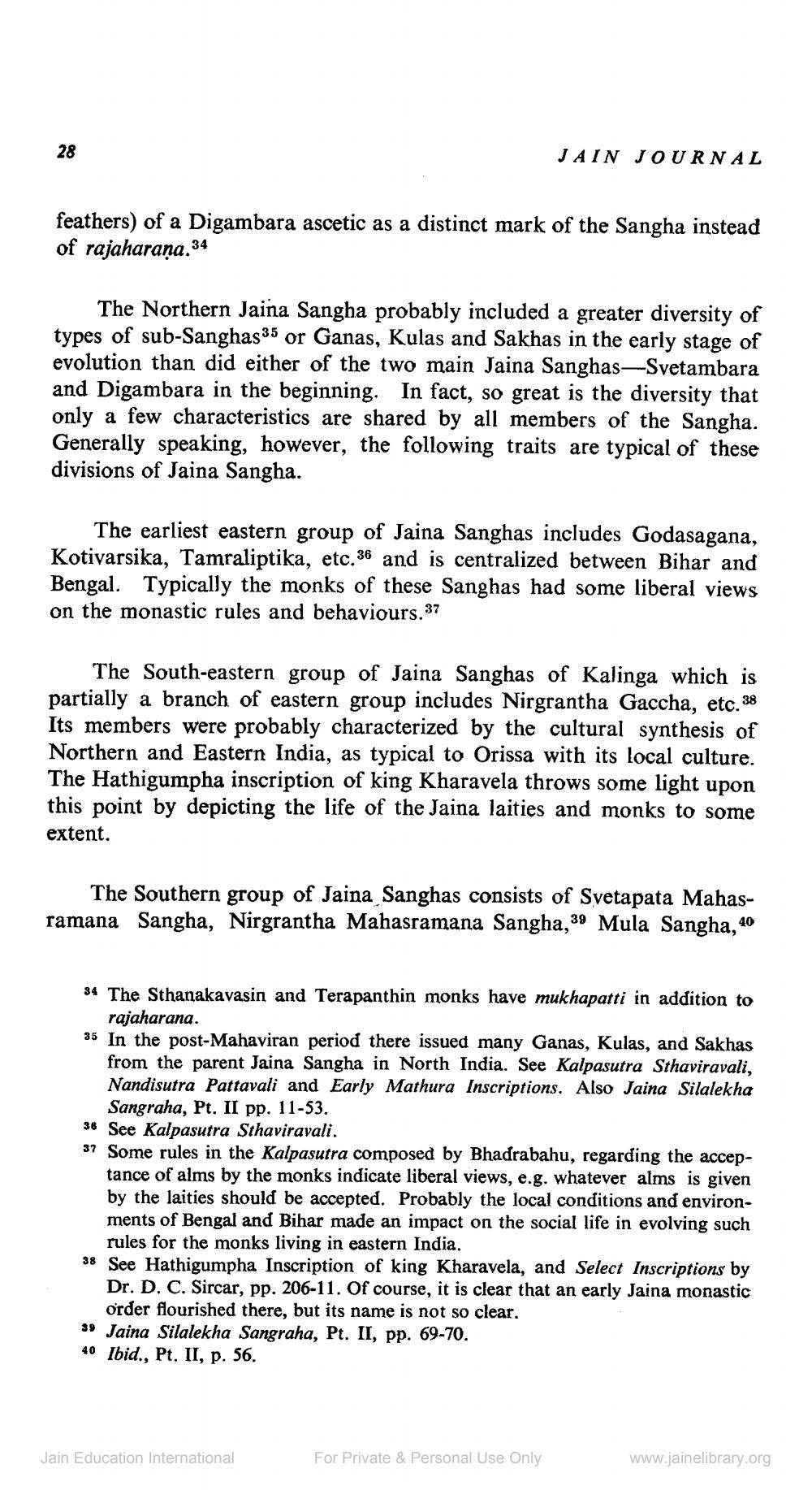________________
28
feathers) of a Digambara ascetic as a distinct mark of the Sangha instead of rajaharana.34
The Northern Jaina Sangha probably included a greater diversity of types of sub-Sanghas35 or Ganas, Kulas and Sakhas in the early stage of evolution than did either of the two main Jaina Sanghas-Svetambara and Digambara in the beginning. In fact, so great is the diversity that only a few characteristics are shared by all members of the Sangha. Generally speaking, however, the following traits are typical of these divisions of Jaina Sangha.
JAIN JOURNAL
The earliest eastern group of Jaina Sanghas includes Godasagana, Kotivarsika, Tamraliptika, etc.36 and is centralized between Bihar and Bengal. Typically the monks of these Sanghas had some liberal views on the monastic rules and behaviours.37
The South-eastern group of Jaina Sanghas of Kalinga which is partially a branch of eastern group includes Nirgrantha Gaccha, etc.38 Its members were probably characterized by the cultural synthesis of Northern and Eastern India, as typical to Orissa with its local culture. The Hathigumpha inscription of king Kharavela throws some light upon this point by depicting the life of the Jaina laities and monks to some
extent.
The Southern group of Jaina Sanghas consists of Svetapata Mahasramana Sangha, Nirgrantha Mahasramana Sangha,39 Mula Sangha,40
84 The Sthanakavasin and Terapanthin monks have mukhapatti in addition to rajaharana.
35 In the post-Mahaviran period there issued many Ganas, Kulas, and Sakhas from the parent Jaina Sangha in North India. See Kalpasutra Sthaviravali, Nandisutra Pattavali and Early Mathura Inscriptions. Also Jaina Silalekha Sangraha, Pt. II pp. 11-53.
36 See Kalpasutra Sthaviravali.
37 Some rules in the Kalpasutra composed by Bhadrabahu, regarding the acceptance of alms by the monks indicate liberal views, e.g. whatever alms is given by the laities should be accepted. Probably the local conditions and environments of Bengal and Bihar made an impact on the social life in evolving such rules for the monks living in eastern India.
38 See Hathigumpha Inscription of king Kharavela, and Select Inscriptions by Dr. D. C. Sircar, pp. 206-11. Of course, it is clear that an early Jaina monastic order flourished there, but its name is not so clear.
39 Jaina Silalekha Sangraha, Pt. II, pp. 69-70.
40 Ibid., Pt. II, p. 56.
Jain Education International
For Private & Personal Use Only
www.jainelibrary.org




